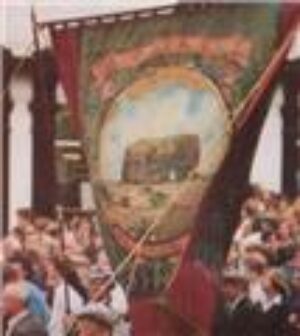The Colliery Beach
Situated just north of the lighthouse and directly below the old Marsden Village the Colliery
beach is typical of the coves in the area. Very rugged, surrounded by large grotesque
rock formations that have been weathered by the sea for a millennia.
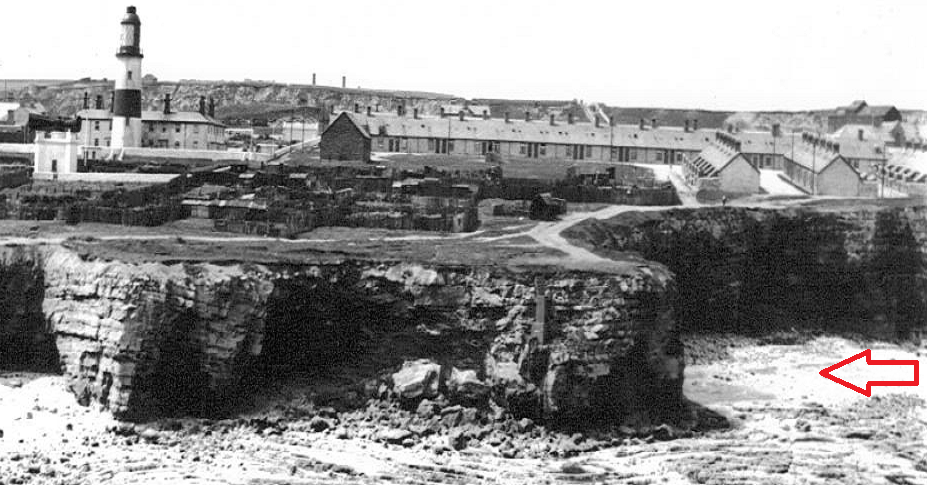
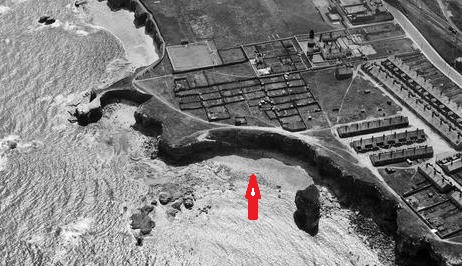
At low water on the Colliery beach the sea exposes rocky ledges that are covered with thick dark brown seaweed (kelp). Between these rock formations deep gulley’s have been formed. At the south-end of the beach these ledges are known as the far-outs, basically because of their position. It would be unwise for a stranger to venture out here. Not all of the kelp is on solid rock but is covering some of the deep gulley’s and a step in the wrong place could see you pitched into two metre`s of sea water.
My first experience of the Colliery beach occurred when I was 8 years old.
I attended Marsden Junior School and one of my friends at school was Ian McDonald who lived in Marsden Village. One day after school I decided to go willicking with Ian down the Colliery beach. As children do, at that young age we soon lost track of time. When I returned home with my impressive haul of willicks the reception wasn’t good mam had reported me missing and the police were out looking for me.
Access to the beach was via a narrow path that had been dug out of the cliff by the villagers. It angled down the cliff face but didn’t quite reach the beach. The last 3 metres of the descent was by an iron ladder that had been made in the collieries blacksmith shops and was anchored to the cliff face. Everyone of all ages used this path down. Although it was a long drop over the side and the path didn’t have a safety rail it didn’t seem to bother anyone. There was no health and safety officials interfering in your life in those days, you just took your chances.
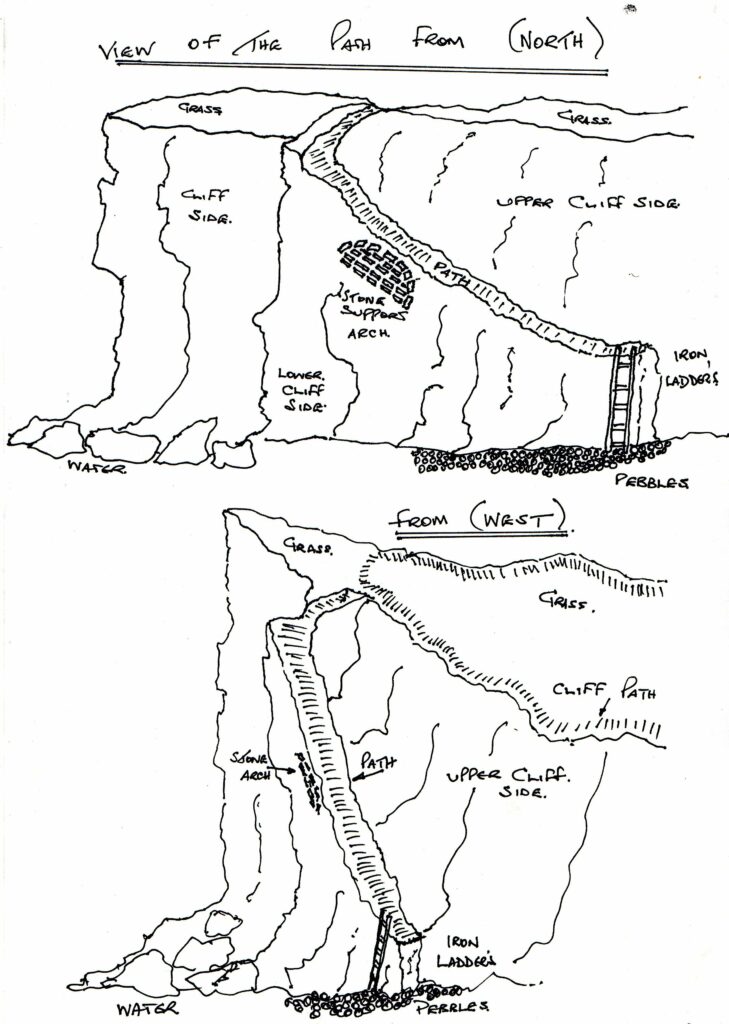
I remember on one occasion I was walking along the cliff tops with a former girlfriend and we ended up using the path and ladders to access the beach which she didn’t know existed. Brave Girl, I wonder where she is now.
Two friends of mine Ray Manson and Walter Cauwood who still boat fish the area have told me of massive falls of rock in some areas of the cliffs along the coast.
Therefore in March 2015 I decided to visit the Colliery Beach for myself.
The only way you can access the beach today is from Wharry by walking along the coastline when there is a good tide running to allow yourself time to get there and get back safely.
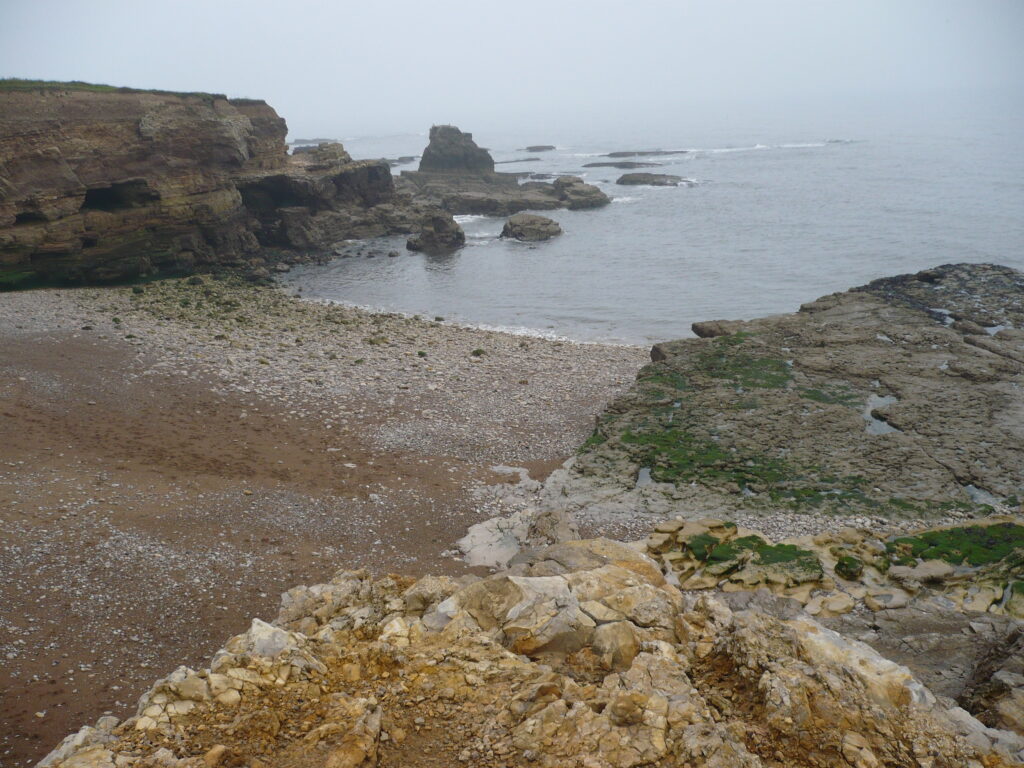
Not long into my journey I realised I was not sixteen anymore and not having travelled this journey for many years I soon found my balance on the rocks was not as good as when I was teenager. As I travelled on I could hear father’s wise words from all those years ago echoing in my head “keep off the green stuff “
Stumbling on I realised if I made it, this would probably be the last time I would ever visit the beach that meant so much to me growing up. The area I played in and fished as a young boy and a teenager.
In Clay Steps Bay I could see for myself evidence of recent cliff falls.
At the point below the lighthouse I looked for the metal ring that was used as an anchor for an endless fishing line. It used to be visually quite prominent, not anymore; large boulders cover the whole area. I fear the evidence of the endless has gone forever.
Looking up I see the pinnacle a man-made cement pillar. Although I am not completely certain I am lead to believe it was built as a sight marker for the then gun battery at Tynemouth.
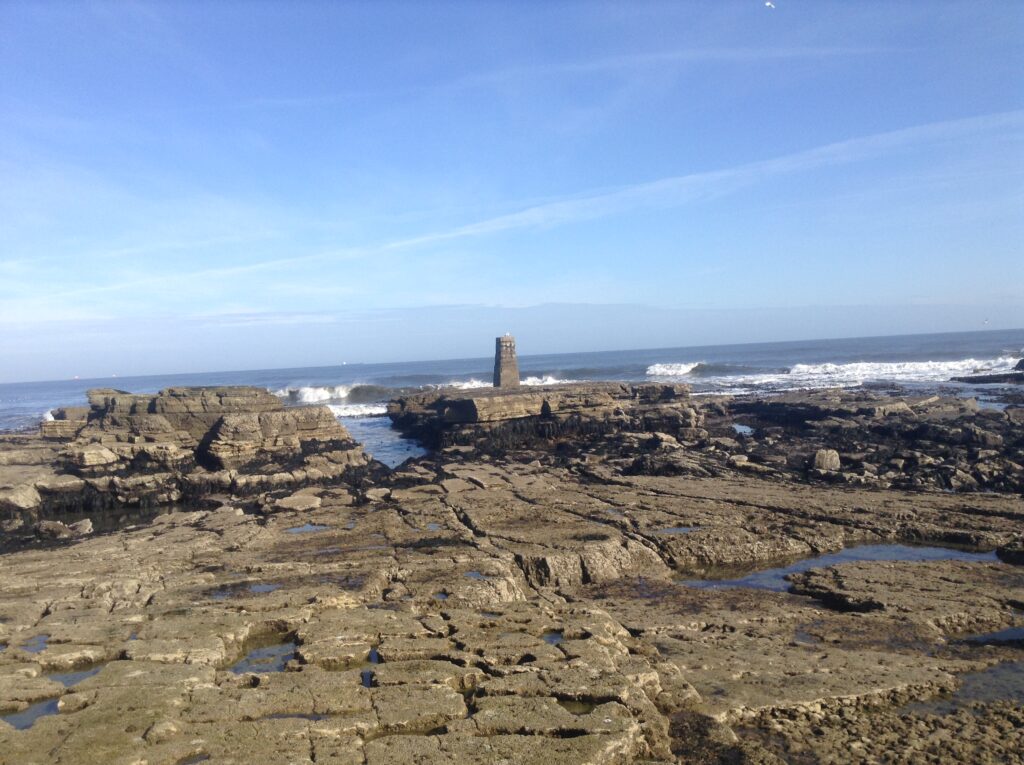
Rounding the point I arrive at the south end of the Colliery beach and my final destination. However massive fall of rocks greets me, clambering around this fall like a young Sherpa Tenzing I am able look up at the cliff and I can see the goat path; well part of it. A large stone arch which the villagers built into the side of the cliff to support the path is also still visible. The rest of the path has fallen away and there is no trace that the ladder ever existed.
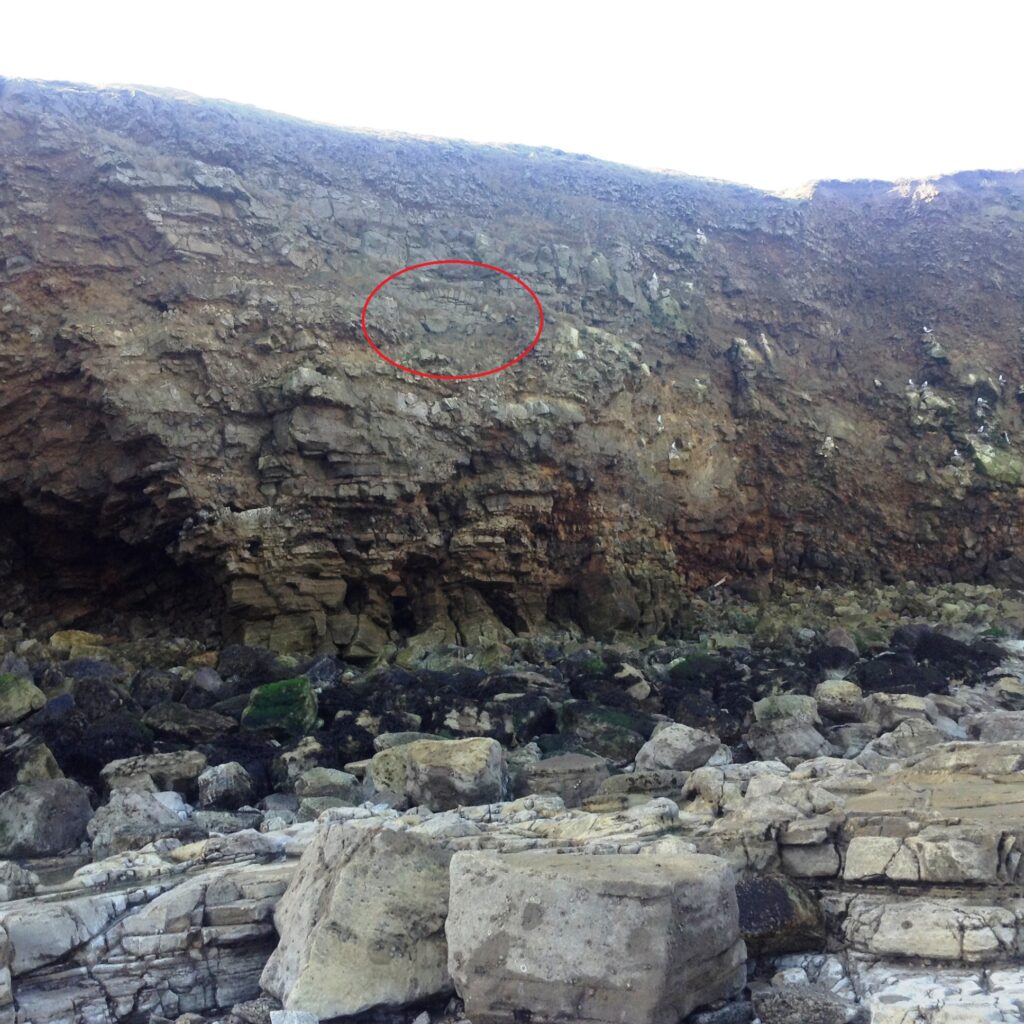
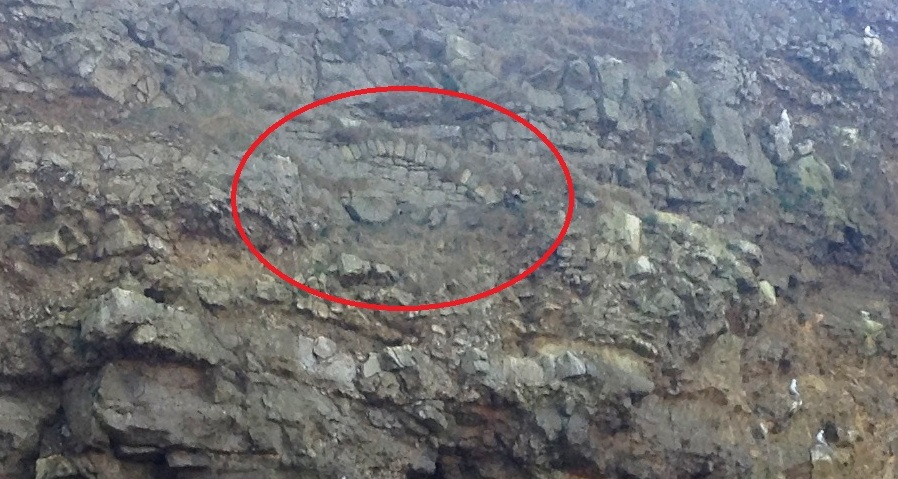
In the northwest corner of the cliffs there is a cave that fishermen used to use. They would shoot their nets then come ashore and use the cave as shelter until it was time to haul the nets.
A fire would be lit and the men would eat and sleep here protected from the elements.
The cave is still there but doesn’t resemble the one 45 yrs ago. The top and front of the cave has collapsed and is lying in front of the cave. The roof still has the evidence of many fires and in the rubble blackened bricks that cover the pebbles.
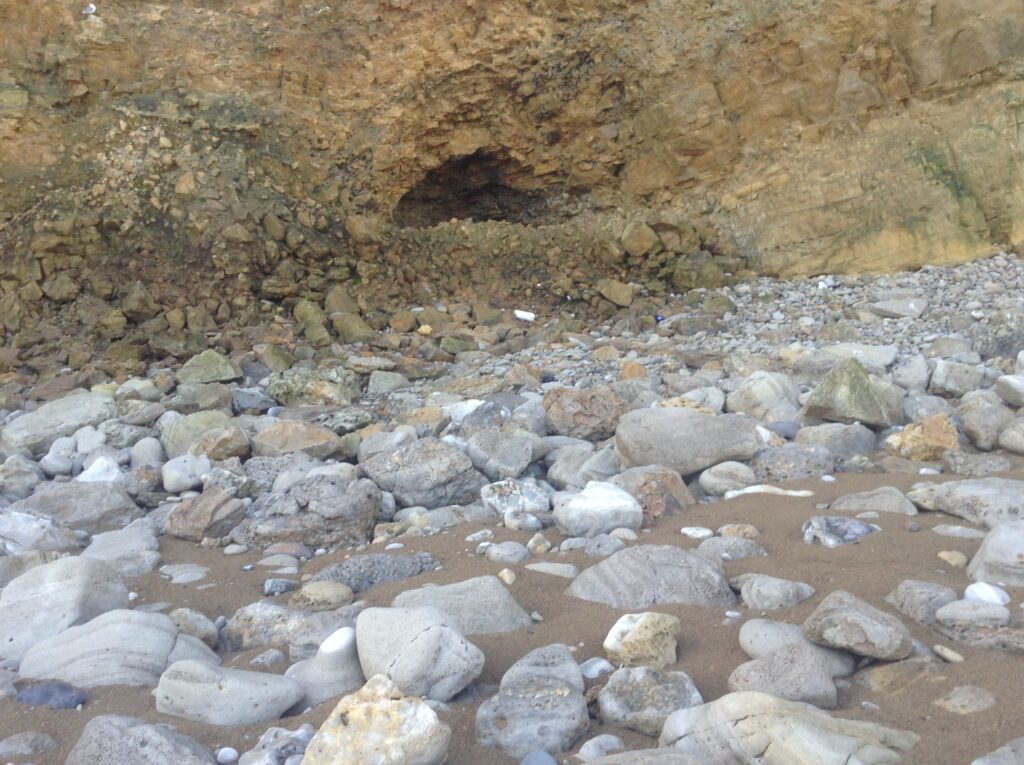
Today the caves could no longer provide any shelter like it had done in the past to the likes of Billy Greaves, Alby Cauwood, Jimmy Nicca (Nicholson) and Ray Manson.
As I continue along the beach and I see a square window cut out cliff. The rock here is a different colour and looks much stronger than either side of it which have suffered rock falls. This cave is manmade and at one time wooden doors covered the entrance. The wooden pegs that held the doors are still evident although the small window doesn’t look like it let much light in. This is where my great grandfather Robert Wilson kept and repaired small fishing boats.

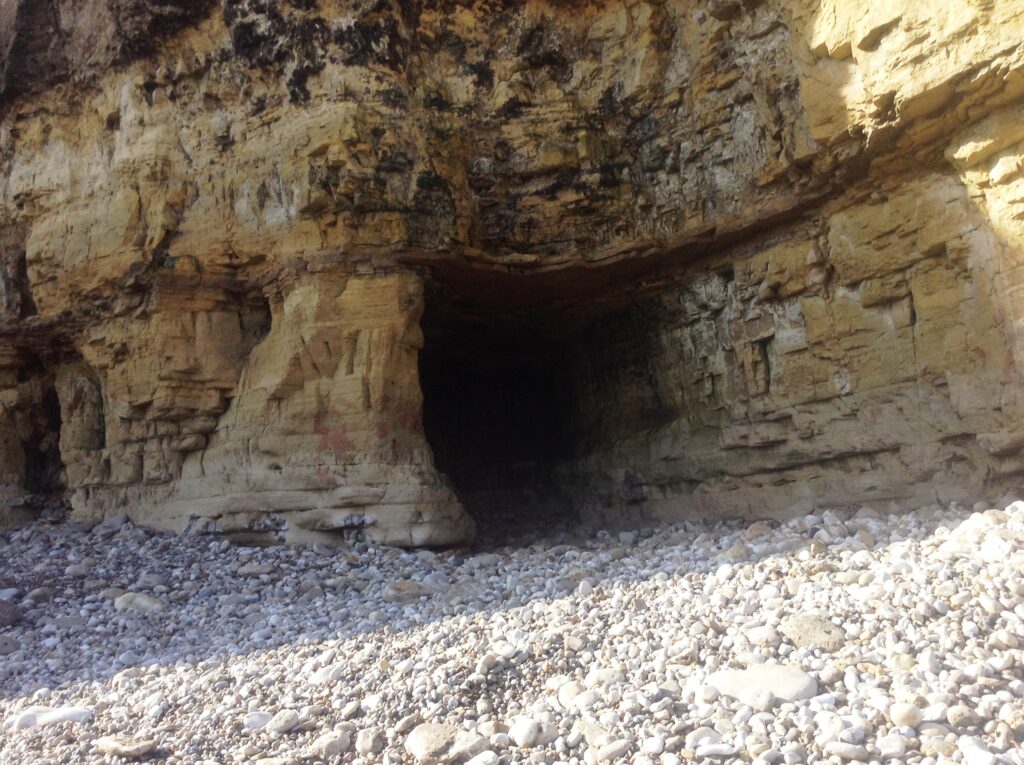
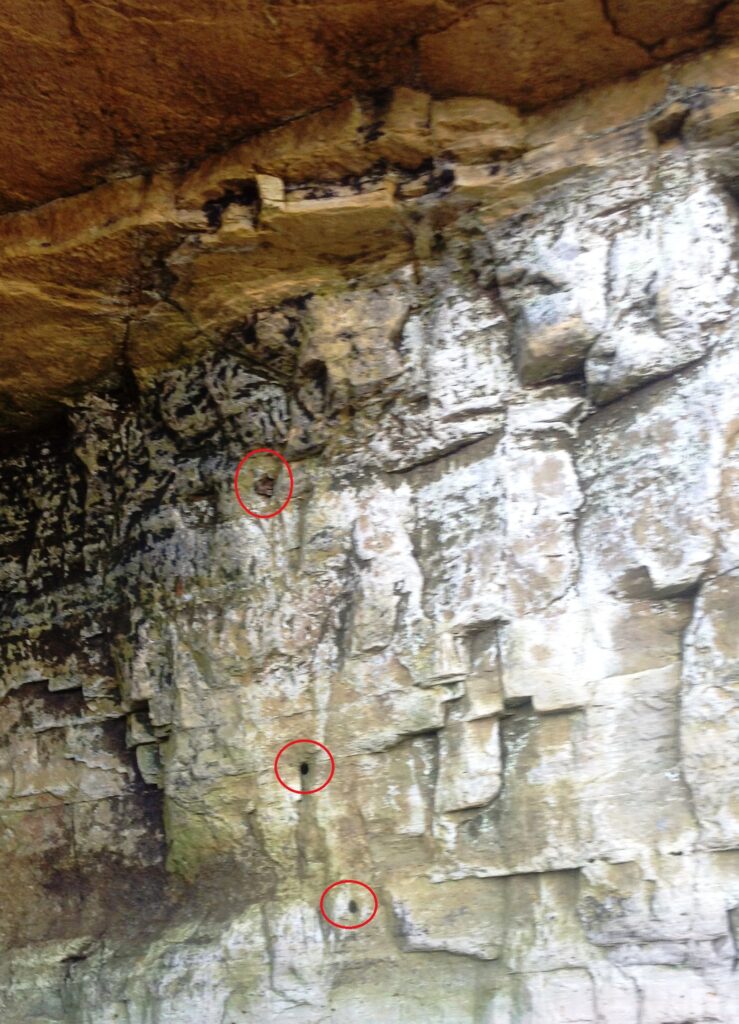
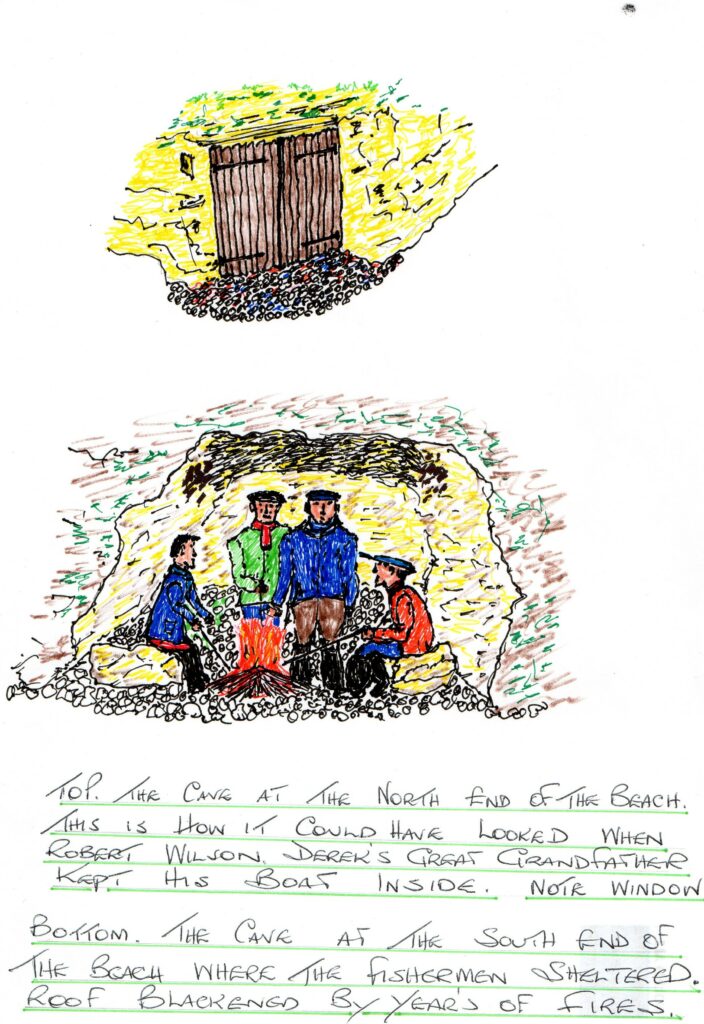
I hope anybody who reads this can go to southeast point of cove. Stand at the fence on the cliff top and look along the beach and imagine what it was once like.
As I turn and look at the massive Jack Rock I reminisce that this is where we tied our salmon nets too and where we climbed up to collect kittiwake and fulmars eggs.
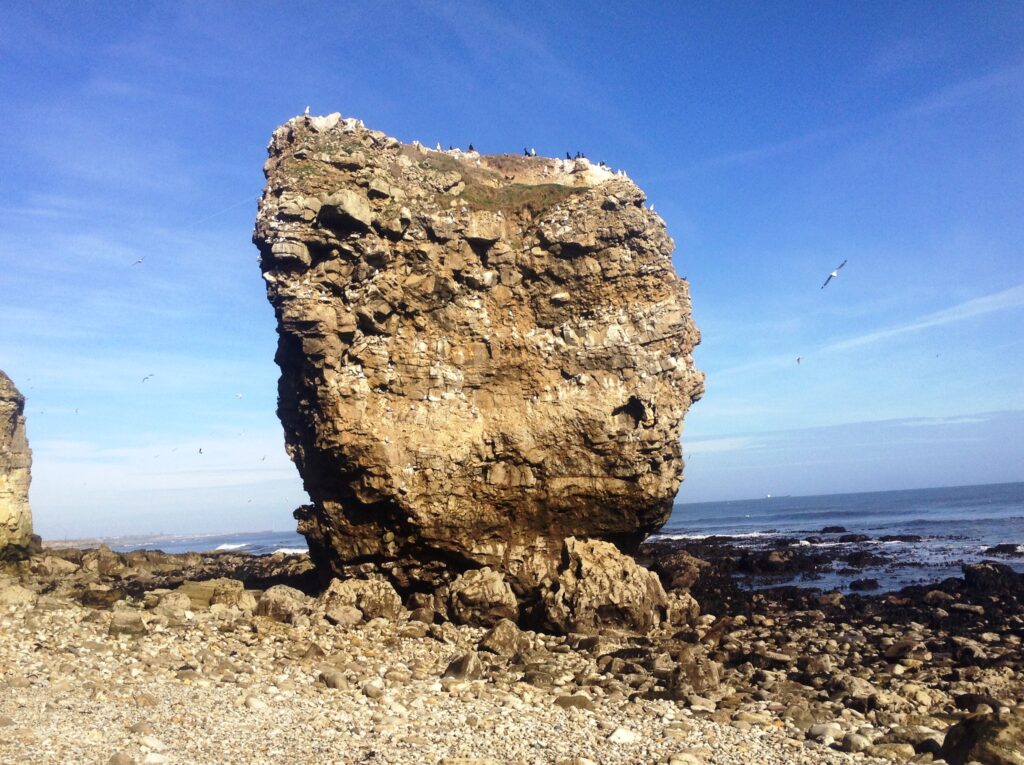
All of a sudden the gulls start flying about making lots of noise, I must have invaded their personal space or maybe they have just recognised me.
Well what’s the saying ‘time and tide wait for no man’ I better be heading back I don’t want to make the front page of the Shields Gazette.
How I wish the goat track and ladder were still there.
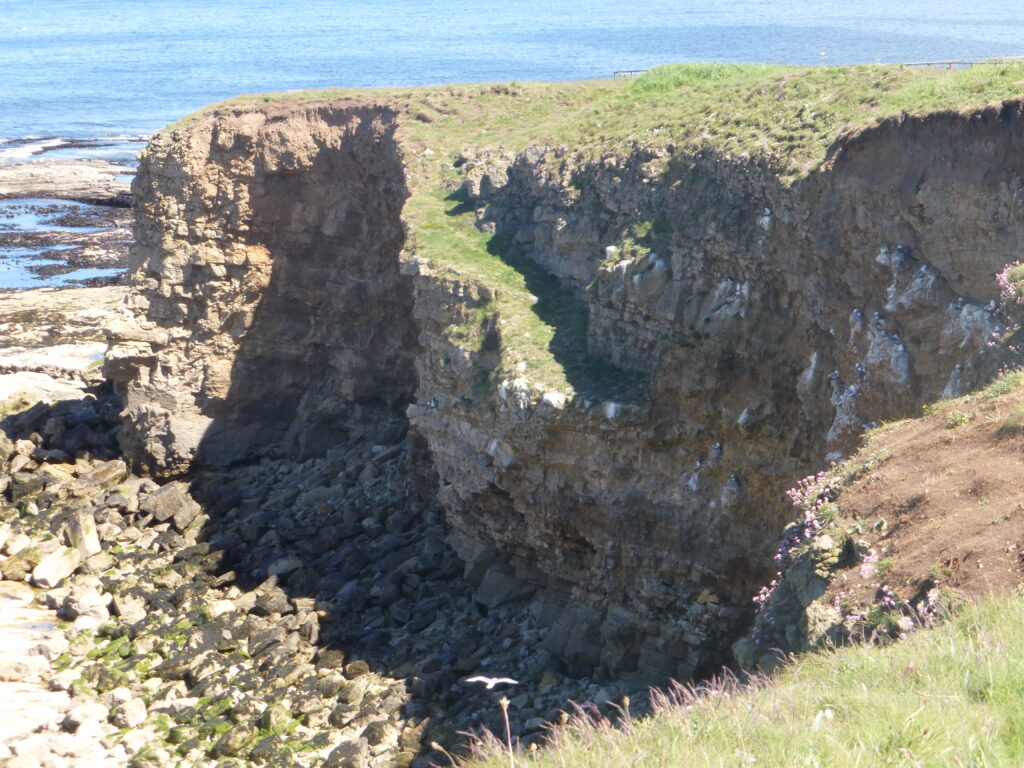
Derek Wilson 2015
